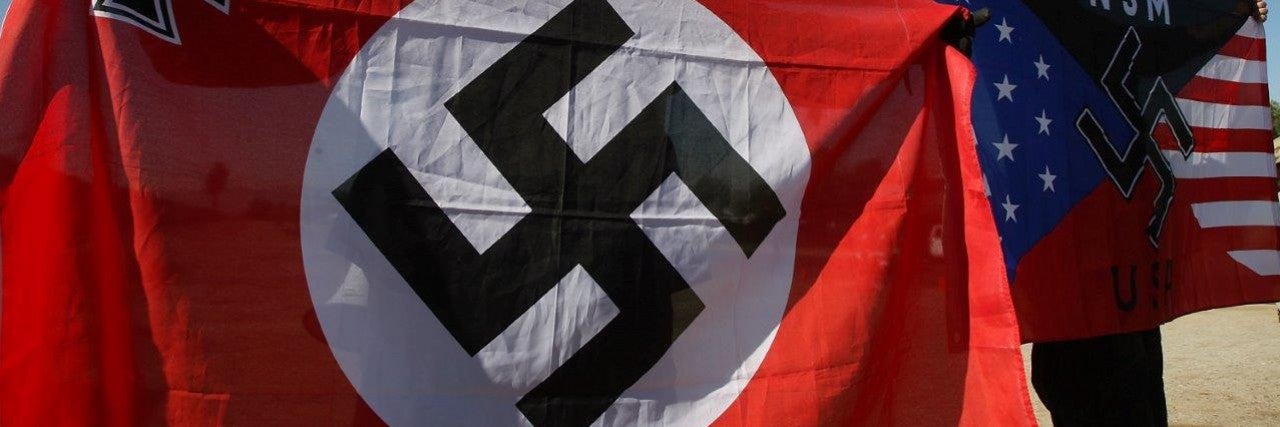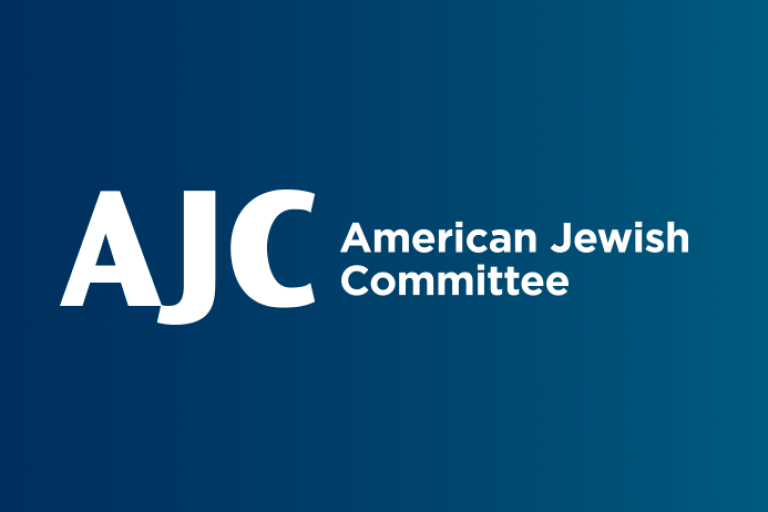June 24, 2019
Hours before they testified on Capitol Hill about what they view as the federal government’s inadequate response to white supremacy, former homeland security official Brette Steele and former neo-Nazi Tony McAleer offered a preview at AJC Global Forum 2019 of what they would share with Congress.
Steele and McAleer joined reporter Janet Reitman and hate crimes scholar Brian Levin at AJC’s premier annual gathering to sound the alarm about white supremacist violence in the U.S. and the underestimated threat it poses to the Jewish community.
“There is now an ecosystem with social media and politics that is entrenched white nationalism and it’s entrenched around the world,” said Levin, Director of the Center for the Study of Hate and Extremism at California State University, San Bernardino.
In response to reports that the Department of Homeland Security, under the current administration, has significantly reduced resources that would address the increasing threat of white supremacist extremism, AJC has been advocating for hearings on white supremacism since October.
The Muslim-Jewish Advisory Council (MJAC), established by AJC and Islamic Society of North America, sent letters to all members of the House and Senate Judiciary and Homeland Security Committees, said Ari Gordon, AJC Director of Muslim Jewish Affairs.
In addition, after the shootings in New Zealand and at Chabad of Poway, MJAC issued a call to action in which Jews, Muslims and other Americans asked their representatives to explore how to provide law enforcement with the proper resources to confront the threat of violence,” he said. The newly established Congressional Black-Jewish Caucus, formed with AJC’s involvement, also has made this a priority.
The House Committee on Oversight and Reform invited Steele and others to assess budgets, staffing, information gathering, and possible solutions.
Steele told AJC that the U.S. has taken different legal approaches to terrorism, but federal code holds Americans who commit acts of terror to a different standard than foreigners.
“If you are using a gun like we saw in Tree of Life or Poway, if you’re using a car like we saw in Charlottesville to violently kill people in order to cause fear and coercion, there is no terrorism charge in the U.S. code,” she said. “If you use that same gun or that same car to violently cause fear and coercion on behalf of the Islamic state there is a terrorism charge. We need a code to reflect the conduct and not the ideology behind that conduct.”
The danger of failing to do so should not be underestimated, experts said. The FBI relies on voluntary reporting from the 18,000 local law enforcement agencies across the country, but the Bureau of Justice Statistics estimates that the 7,000 hate crimes reported by the FBI in 2017 may actually be closer to 200,000.
Addressing the problem is crucial to stop the climbing statistics, Levin said. In 2018, the Southern Poverty Law Center showed the existence of 1,020 hate groups in the U.S. – a record number. According to FBI statistics, hate crimes have spiked around political events, Levin said, noting that November 2016 was the worst month for hate crimes in 14 years and November 10, 2016 (the day after the President Trump’s election) the worst day.
He revealed results of a new study not yet published that shows a dramatic increase in hate crimes in thirty major U.S. cities, especially a surge in antisemitic incidents.
But the reality is there has been a constant stream of white supremacist violence for the last decade, Steele said. When she served in the U.S. Department of Homeland Security, addressing domestic terrorism and white supremacy was one of her top priorities.
While historically the department offered community awareness briefings on people traveling overseas to join ISIS, Steele was asked to develop a similar community awareness tool on violent white supremacy, which were offered to houses of worship, including synagogues, across the country.
Her department also developed community resilience exercises so parents knew where to go if they saw their children spending too much time on extremist sites and how that child can access the resources he or she needs to feel less alienated.
McAleer said he was once one of those at-risk kids. Estranged from his father who had fought in World War II, McAleer hung a picture of Adolf Hitler, the man who dropped bombs on his dad, on his wall. The white supremacist movement gave McAleer a sense of purpose and belonging. Making sure they find that purpose elsewhere is key to overcoming the appeal of the movement.
But those strategies require staff and funding. Two years ago, Steele said, efforts to combat domestic terrorism had $21 million, with $10 million in grant funding, 16 full-time personnel, and 25 contractors. The same office now has a budget of $2.6 million and only eight full-time personnel.
“What we need to build are compassionate solutions, where parents and peers are willing to reach out and get someone they love help,” Steele said. “That’s what we’re trying to build: the capacity of prevention professionals to provide that help and be that resource for those parents and friends who are looking for a lifeline for someone they care about.”


